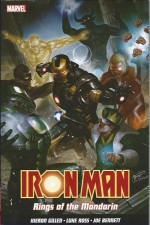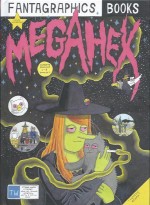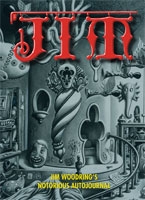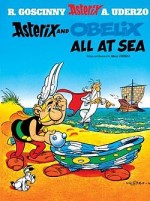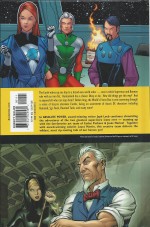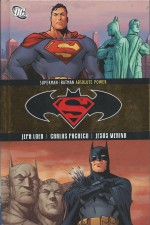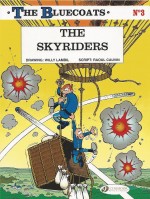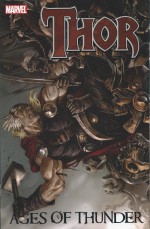
By Peter O’Donnell & Enric Badia Romero (Titan Books)
ISBN: 978-1-78116-709-0
Win’s Christmas Gift Recommendation: unmissable comics for fans of classic blockbusting adventure… 9/10
Modesty Blaise and her lethally adept platonic partner Willie Garvin were superior criminals who retired young, rich and healthy – without ever getting too dirty – from a career where they made far too many enemies.
They were slowly dying of boredom in England when British Spymaster Sir Gerald Tarrant offered them a chance to have fun, get back into harness and do a bit of good in the world. They jumped at his offer of excitement and a chance to get some really evil sods.
With that tenuous beginning in ‘La Machine’ (see Modesty Blaise: the Gabriel Set-Up) the pair embarked upon a non-stop helter-skelter thrill-ride that has pitted them against the World’s vilest villains and maddest maniacs…
The legendary femme fatale first appeared in The Evening Standard on May 13th 1963 and over the following decades went on to star in some of the world’s most memorable crime fiction, all in three panels a day.
Creators Peter O’Donnell & Jim Holdaway (who had previously collaborated on Romeo Brown – a light-hearted adventure strip from the 1950’s itself long overdue for revival and compilation) produced a treasure trove of brilliant graphic escapades until the illustrator’s tragic early death in 1970, whereupon Spanish artist Enric Badia Romero and others assumed the art reins, taking the daredevil duo to even greater heights.
Modesty has been syndicated world-wide and the partners in peril have also starred in 13 prose novels and short-story collections, several films, a TV pilot, a radio play and nearly one hundred comic strip adventures between 1963 and the strip’s conclusion in 2002.
The tales are always stylish and engaging spy/crime/thriller fare in the vein of Ian Fleming’s Bond stories (as opposed to the super-spy’s sometimes over-the-top cinema exploits) although Modesty and Willie are competent, canny, deadly, yet all-too-fallibly human.
Reproduced in stark and stunning black & white – as they should be – Titan Books’ superb and scrupulous serial re-presentations of the ultimate newspaper troubleshooter continue here with O’Donnell and perennial collaborator Romero at the top of their game in a trio of tales spanning August 5th 1991 to November 2nd 1992, each prefaced with informative prose introductions from devotee and historian Lawrence Blackmore.
The rollercoaster ride begins with eponymous thriller ‘The Young Mistress’ (originally seen in The London Evening Standard from August 5th 1991 – January 6th 1992) which delves into the thorny subject of domestic abuse and the high-stakes world of art forgery.
When Modesty and current paramour Dr. Giles Pennyfeather aid a young woman thrashed with a riding crop they are astounded when the terrified Marian Hall refuses to press charges against shady art dealer Bruce Lacey.
Not only does the sadistic bully have unsubstantiated links to the underworld but he clearly enjoys inflicting pain. However when he surprises Marian’s rescuers, his attempts to teach Modesty “a lesson†rebound on him painfully and humiliatingly. They even take his toy girlfriend away…
Safely ensconced with Modesty and Willie, Marian explains that it’s not love but fear and guilt that keep her with Lacey. The young commercial artist is a brilliant copyist and when she first began seeing the astoundingly well-connected gallery owner, he convinced her to counterfeit a valuable painting before selling it on to an unsuspecting collector.
As a participant (albeit innocently) in fraud, she is in the monster’s pocket. Moreover Lacey was intending to use Marian to forge a borrowed Rembrandt and subsequently kidnaps her and her understanding old boyfriend to ensure the talented lass’ compliance in his nefarious multi-million-dollar scheme.
Determined to end the beast’s predations and thoroughly aware that Lacey will never rest until he has subjected Modesty to the brutal tortures that push his sick buttons, Willie and Modesty undertake a convoluted sting to break his power base, but are unaware of just how vicious and violent Lacey can be.
He, of course, has completely underestimated the lengths to which Modesty will go to defend the helpless…
‘Ivory Dancer’ (January 7th – June 5th 1992) changes tack as Modesty and Willie take their feisty, horse-mad prodigy Samantha to Kentucky for a vacation with billionaire John Dall.
The equine enthusiast is an old lover of Modesty’s as well as owner of the world’s most successful and valuable race horse, but the dream holiday unfortunately coincides with a cruel attempt to kidnap the four-legged superstar by ruthless gangster Gallo.
Sadly for the murderous thugs little Sam has an almost preternatural connection with the horse and once the steed goes missing she’s hot on his trail.
…And Willie and Modesty are hard on her heels; in no mood to be gentle with thugs who steal horses and threaten children…
The addictive action concludes in a classic espionage extravaganza as ‘Our Friend Maud’ (June 8th – November 2nd 1992) reintroduces Sir Gerald’s top agent in a clever tale of brainwashing, contract killing and international intrigue.
Maud Tiller is a top operative and when occasional dalliance Willie Garvin is blanked by her in a French restaurant he simply assumes she’s undercover on a mission. However his danger-honed senses are troubled and a little quiet checking reveals that the agent has gone AWOL.
Liaising with Modesty and Tarrant, Willie soon discovers that Maud has been kidnapped by fixer-for-hire the High Contractor and deduces she is being slowly programmed to assassinate somebody important and generally untouchable…
Linking up with Modesty, the outraged Garvin tracks Maud down and with the aid of unconventional Gallic operative Code-Name: Henri proceeds to infiltrate the upper echelons of grand society to rescue his English Rose, consequently dismantling one of the most dangerous international terror rings ever to threaten world peace…
These are unforgettable stories from brilliant creators at the peak of their powers; revelling in the majesty of an iconic creation. As timeless adventure romps packed with sex appeal, dry wit and devastating tension, the stories here are more enthralling now than ever and never fail to deliver maximum impact and total enjoyment.
Modesty Blaise © 2014 All rights reserved.



